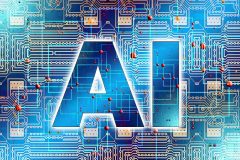By Maristela Laforest Petrovic-Dzerdz, Educational Development Facilitator, TLS
 Current events affecting the present and future of education are causing seismic shifts of a magnitude we have never experienced in the span of our educational careers. In the past twelve years, which is the time I have been working in higher education, we faced potentially “transformative” events such as the proliferation of MOOCs (Massive Online Open Courses), digital textbooks, complete migration to online teaching and learning during the recent pandemic lockdowns, to name a few. Each of the events was catapulted and made possible by the advances in technology, making us contemplate, once more, what the purpose of higher education and our changing role in it is. However, the development of generative AI is bringing changes that are exponentially larger and more impactful, reshaping not only education but the way we live and work. The recent debates about AI which include Chat GPT, the tool that reached a million users in just five days (it took Netflix 3.5 years and Twitter 2 years to reach that number) can likely be summarized with related titles, from TED Talks to The Economist, that include variations of the question “AI: Friend or Foe?”. It will likely be both, and everything in between. The ground is shifting beneath us as we walk.
Current events affecting the present and future of education are causing seismic shifts of a magnitude we have never experienced in the span of our educational careers. In the past twelve years, which is the time I have been working in higher education, we faced potentially “transformative” events such as the proliferation of MOOCs (Massive Online Open Courses), digital textbooks, complete migration to online teaching and learning during the recent pandemic lockdowns, to name a few. Each of the events was catapulted and made possible by the advances in technology, making us contemplate, once more, what the purpose of higher education and our changing role in it is. However, the development of generative AI is bringing changes that are exponentially larger and more impactful, reshaping not only education but the way we live and work. The recent debates about AI which include Chat GPT, the tool that reached a million users in just five days (it took Netflix 3.5 years and Twitter 2 years to reach that number) can likely be summarized with related titles, from TED Talks to The Economist, that include variations of the question “AI: Friend or Foe?”. It will likely be both, and everything in between. The ground is shifting beneath us as we walk.
At the same time, the latest news in Ontario, Canada, is that cursive writing will be reintroduced as a mandatory part of the curriculum starting in September 2023. This reminded me of the blog post “Connecting the dots” I wrote back in 2015, after attending yet another event focusing on digital learning and how it will require “reinventing” education. Eight years later we are, concurrently, attempting to contemplate the future impacts of just developing powerful digital technologies and finding reaserch-informed evidence of the effects that the approaches used for centuries, such as long-hand note-taking, have on student learning (check Wong, S. S. H., & Lim, S. W. H. (2023). Take notes, not photos: Mind-wandering mediates the impact of note-taking strategies on video-recorded lecture learning performance. Journal of Experimental Psychology: Applied, 29(1), 124–135).
In the 2015 blog post I wrote about Steve Jobs who said that taking a calligraphy course at college was probably one of the most important things he has done in his life. In his 2005 Stanford Commencement Address, he passionately talked about this and other things he learned but didn’t know would have any practical application in his life, though they eventually did. He applied the ancient art and skills of calligraphy in the design of products that hundreds of millions of people around the world admire, while changing the way we see and appreciate technology in everyday life. In terms of handwriting only, there is ample research in psychology and neuroscience that shows the importance of handwriting in the development and functioning of human brains.
In the same speech, Steve Jobs also talked about connecting the dots. We are doing something new but we do not know what the impact will be. While we hope for the best, we need to make sure not to discard what has been good and effective in education so far, as we are “reimagining” it. Not to drop any precious dots. Not to nurture generations that will find themselves without any skills when the power goes off. As we are doing this we have to use our best judgment and focus on evidence-informed strategies because education impacts the future and the stakes are high. And we have to be aware that we might not yet be able to begin connecting those dots because, as Steve Jobs put it: ”You can’t connect the dots looking forward; you can only connect them looking backward. So you have to trust that the dots will somehow connect in your future.”
Hence, I would like to pose a question to a wider educational community:
Are the topics of AI and cursive writing so distinct that they do not belong in the same discussion, or must we connect the dots by considering the effects of both on the still-molding brains of young humans who are immersed in a daily process of intensive learning?
More than ever, I urge us to carefully listen to and consider all voices coming from every game player in education and in particular voices of those who are on the front lines of the seismic shifts: teachers and students, to attempt to approximate how the dots might connect (or not) in the future, and be ready to adjust the sails as we go, while we help navigate new generations of youth towards an unknown future.